Marc Chagall spent seven long years in the USA. Traces of his stay can be seen all over New York – including a majestic lion's head, Papageno's trousers and murals that shine like a box of gems.
I’m late and I’m beyond excited. Rushing up from the subway to make it on time to my visit at the archive of the Metropolitan Opera. After checking in with one of the guards, I’m taking the elevator to the parking garage and follow the signs to “stage door.” I get lost two more times before I see the illuminated sign above an unmarked black metal door. I strip my mask on – masks are still necessary in the Metropolitan Opera’s operations headquarters – and slip into the building. It’s Friday morning and some of the Mets employees arrive in a bit of a rush, trying to make it to appointments and rehearsals. Opening night was celebrated just a few days ago, so the building is a buzz with excitement for the fall season. Colorful leave decorations are up, and a lovely bouquet of yellow hyacinths was left for the soprano on one of the wooden benches in the entrance.
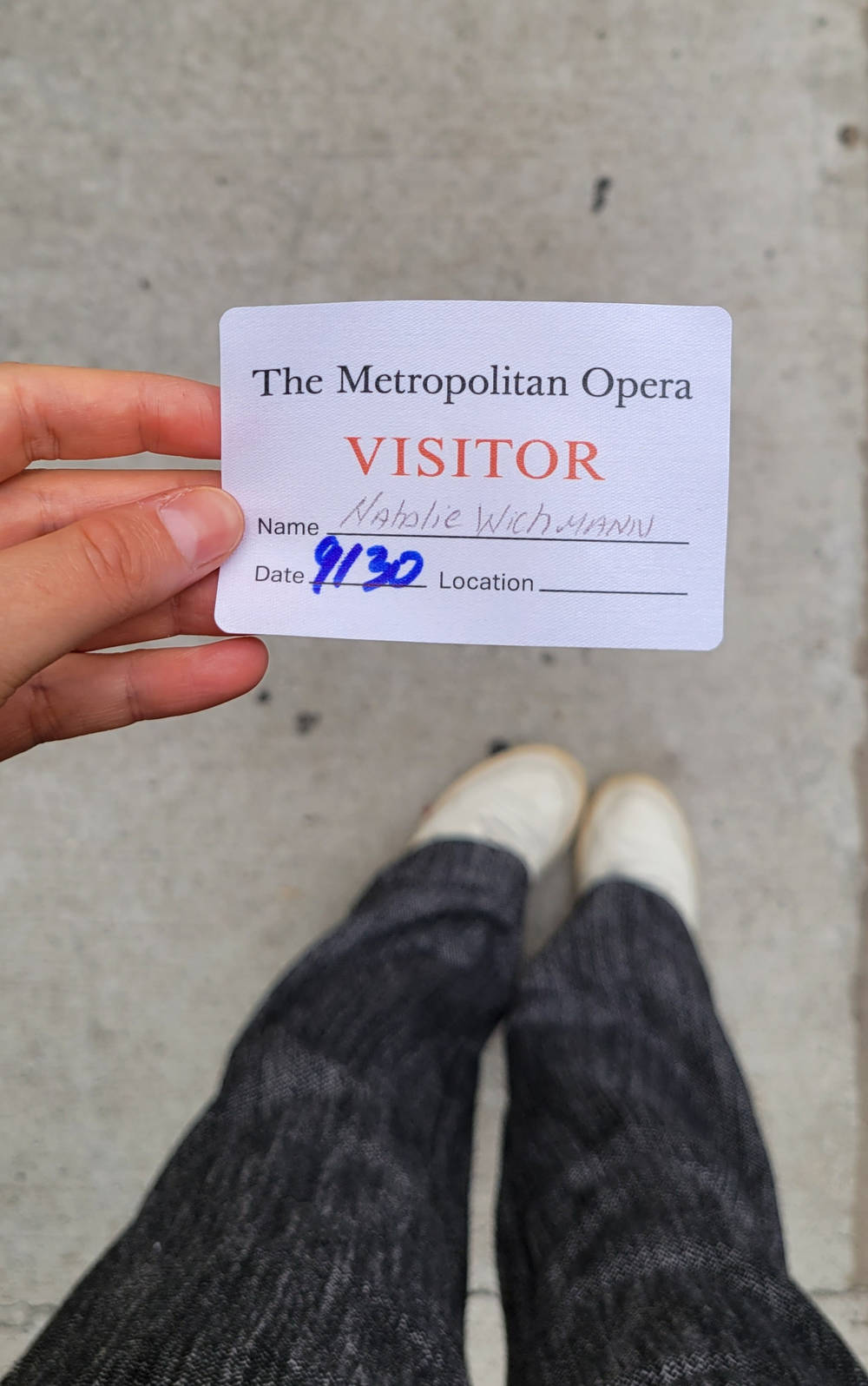
The archive of the Metropolitan Opera
The security officer is perched up in a glass-cubicle in the middle of the entrance, taking a good look at visitor IDs and signing in deliveries. I ask for my contact and after just a couple minutes John, the Metropolitan Opera’s archivist, arrives. He is surprisingly young, I don’t know why I expected an older gentleman, has a contagious smile and full set of red-brown curls tumble on the top of his head. He leads me through a maze of corridors, passing the very official looking stage door – “this door MUST be closed 15 min prior to rehearsal or performance” – to finally enter the holy grail: the archives. Even though the ceilings are low and there are no windows in the space, it is truly a treasure trove of a place. Everywhere are memorabilia, trinkets, busts, and pictures of famous performances. Posters, playbills, books, and props (a Viking shield!) are crammed into simple gunpowder grey metal shelves
Rudolf Bing, the general manager of the Metropolitan Opera from 1950 to 1972, started talking to Marc Chagall about the possibility of designing the costumes and set designs for the production of "the Magic Flute" already in the fall of 1963. Chagall had done some costumes for two New York ballets, "Aleko" and "Firebird", but he had never worked on an opera before. By then he was back in Europe, but excited about the opportunity to work on the opera. He created 16 backdrops, each in a distinctive color scheme, and all the costumes and props – from lion heads through bird cages, every item on stage it seemed the master himself had touched.
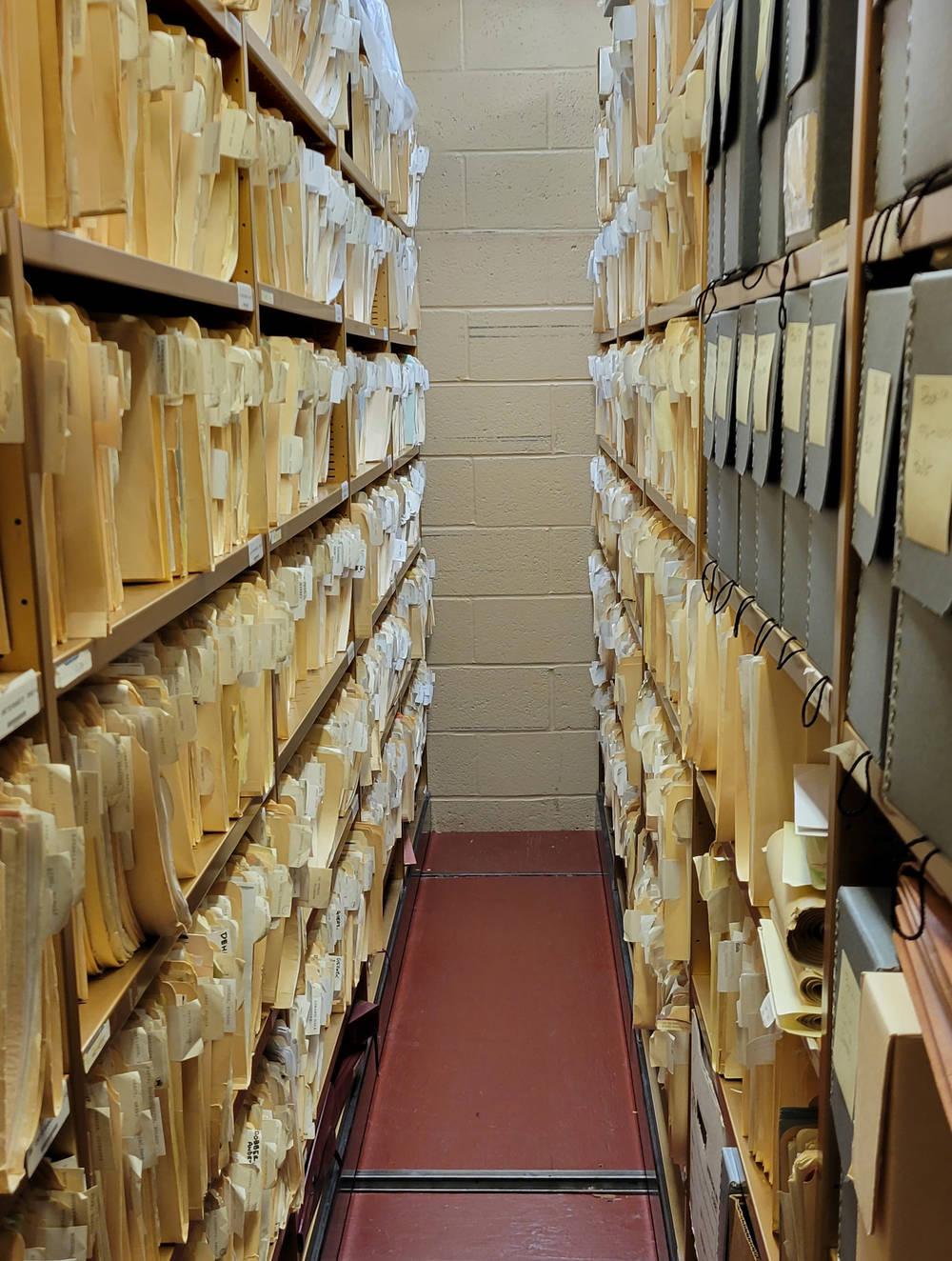
John hands me a pair of white gloves. On a large table to the left are two huge grey paper boxes. He lifts the lid of the first one and a rainbow of colors and shapes seems to jump out. There are stars, and eyes, and feathers peaking from layers of costumes. First up is the Lady of the Night, dark blue, lilac lavender, and gold. Some of the details are added through fabric some of them are hand painted on the heavy silk that functions as a backdrop for the collage of colors. We make our way through Papageno’s pants (they have actual feathers added to the front and back!) and hand painted scarves, hats, leggings, and shoes. But the pièce de la résistance – and John’s favorite – is the majestic head of a lion made from paper mache, including breathing holes covered in painted net to hide them. After doting over these master pieces for a while, we sit down and John hands me a stack of books with sketches and drawings of the costumes I just saw as well as a batch of photographs from the 1967 premiere of the "Magic Flute". And it all makes sense: There is a clear line from the sketches to the costumes in the boxes and then worn by the opera singers on stage. Just like magic. And when John’s colleague pulls out a handwritten letter by Marc Chagall to the Metropolitan Opera, she just found in a box, it’s almost too much.
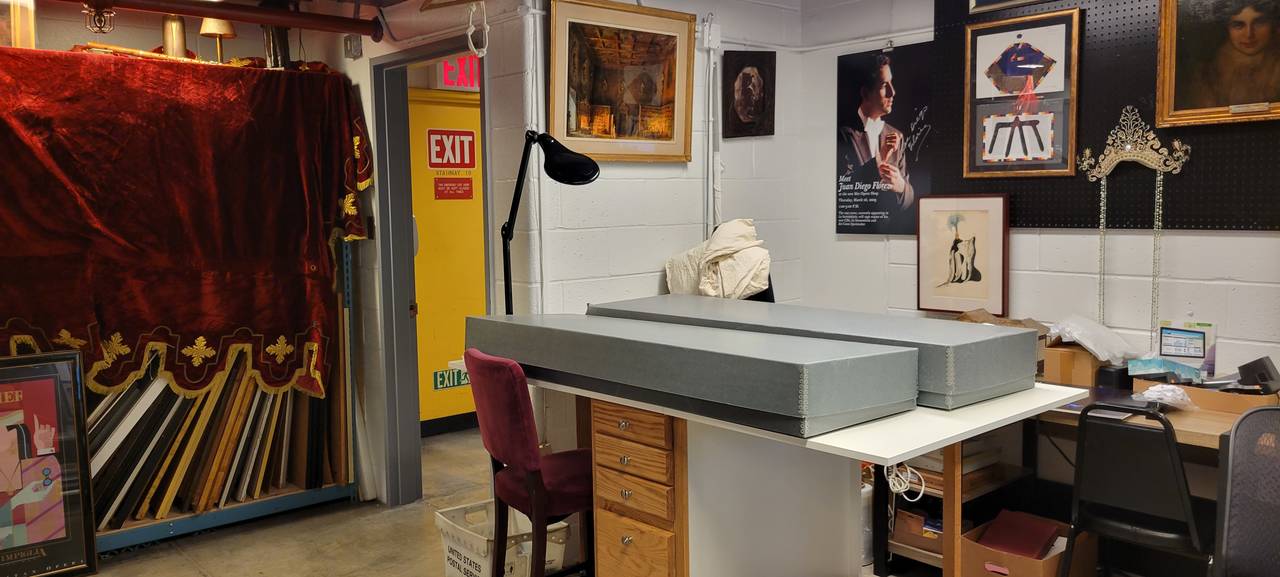
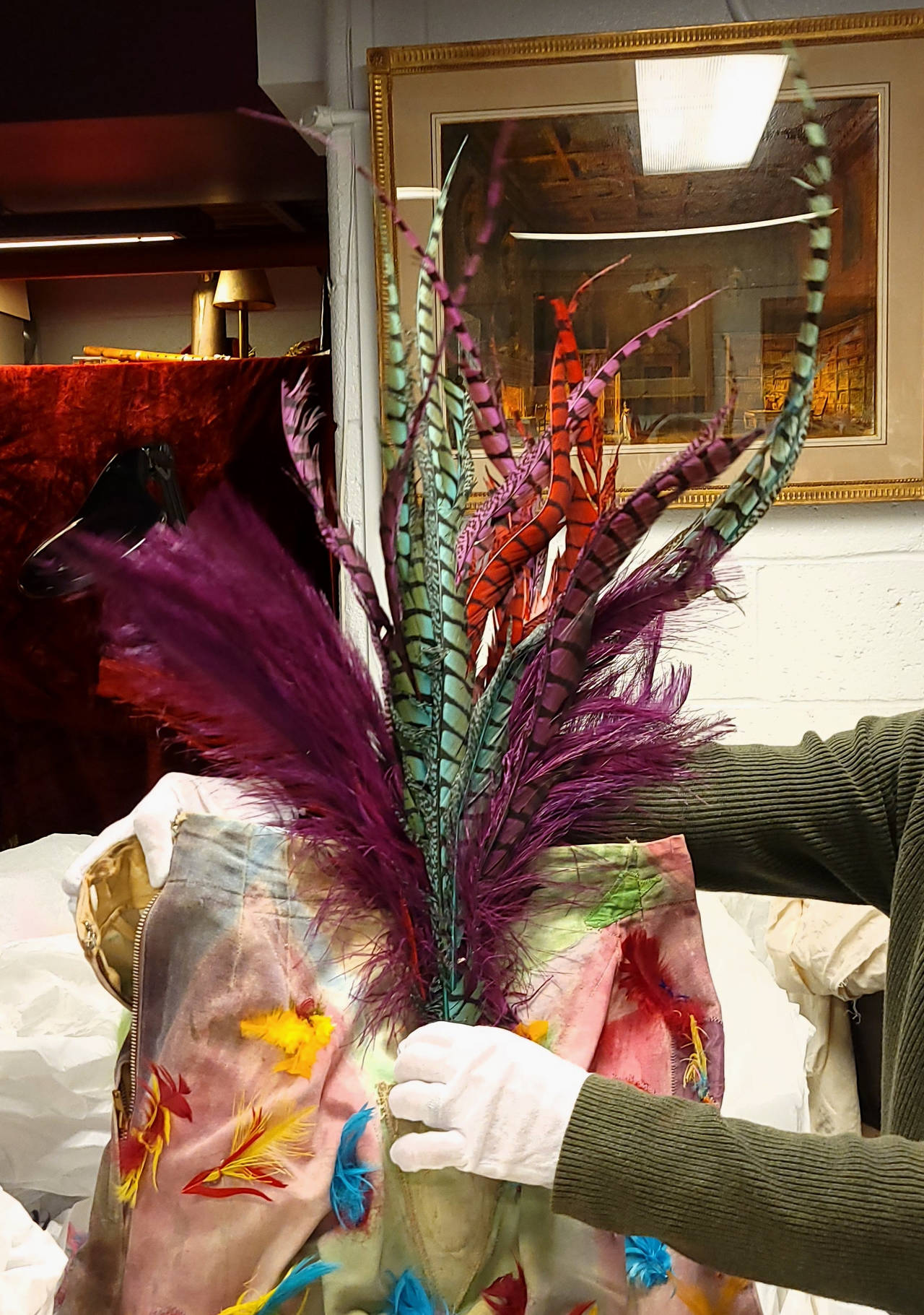
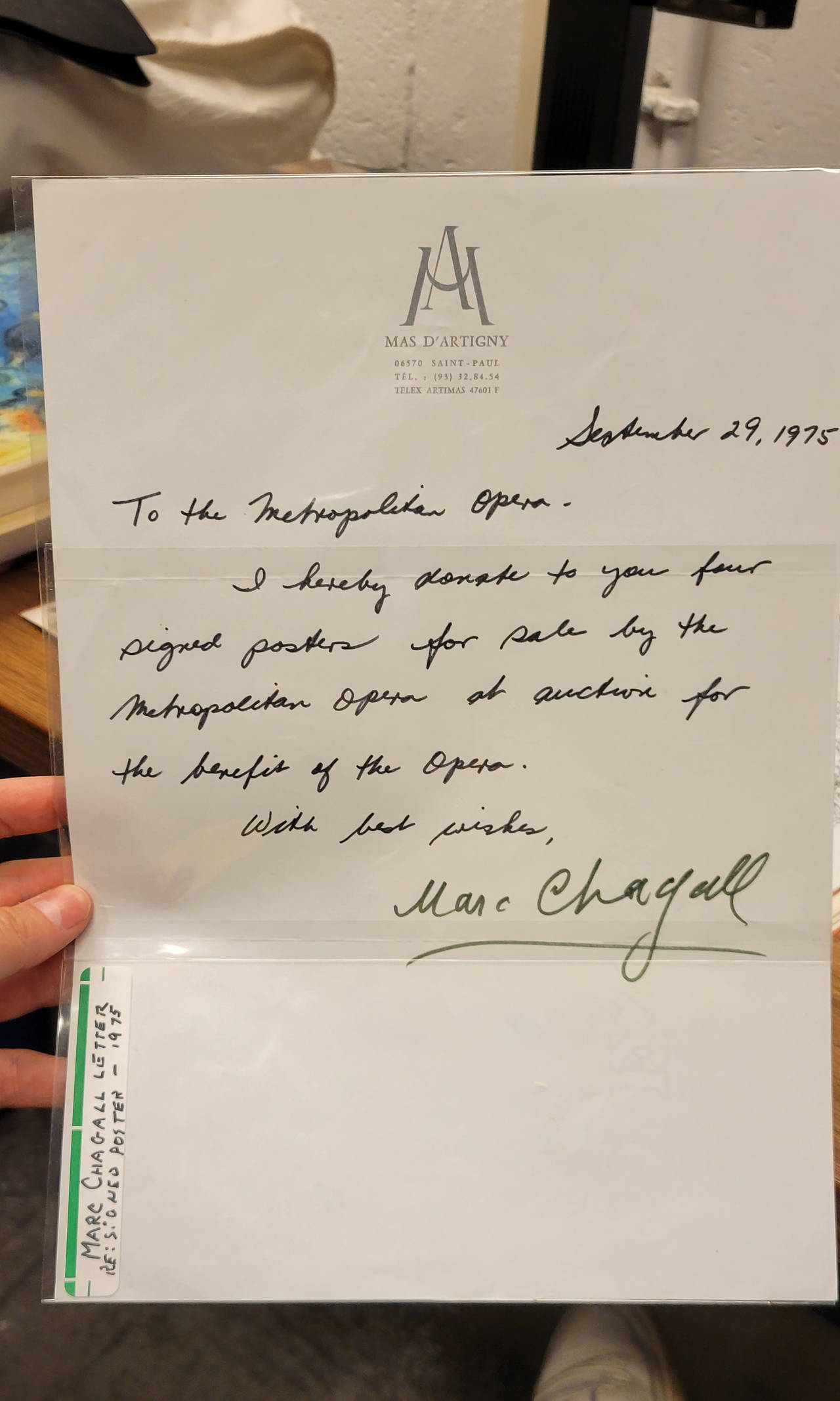
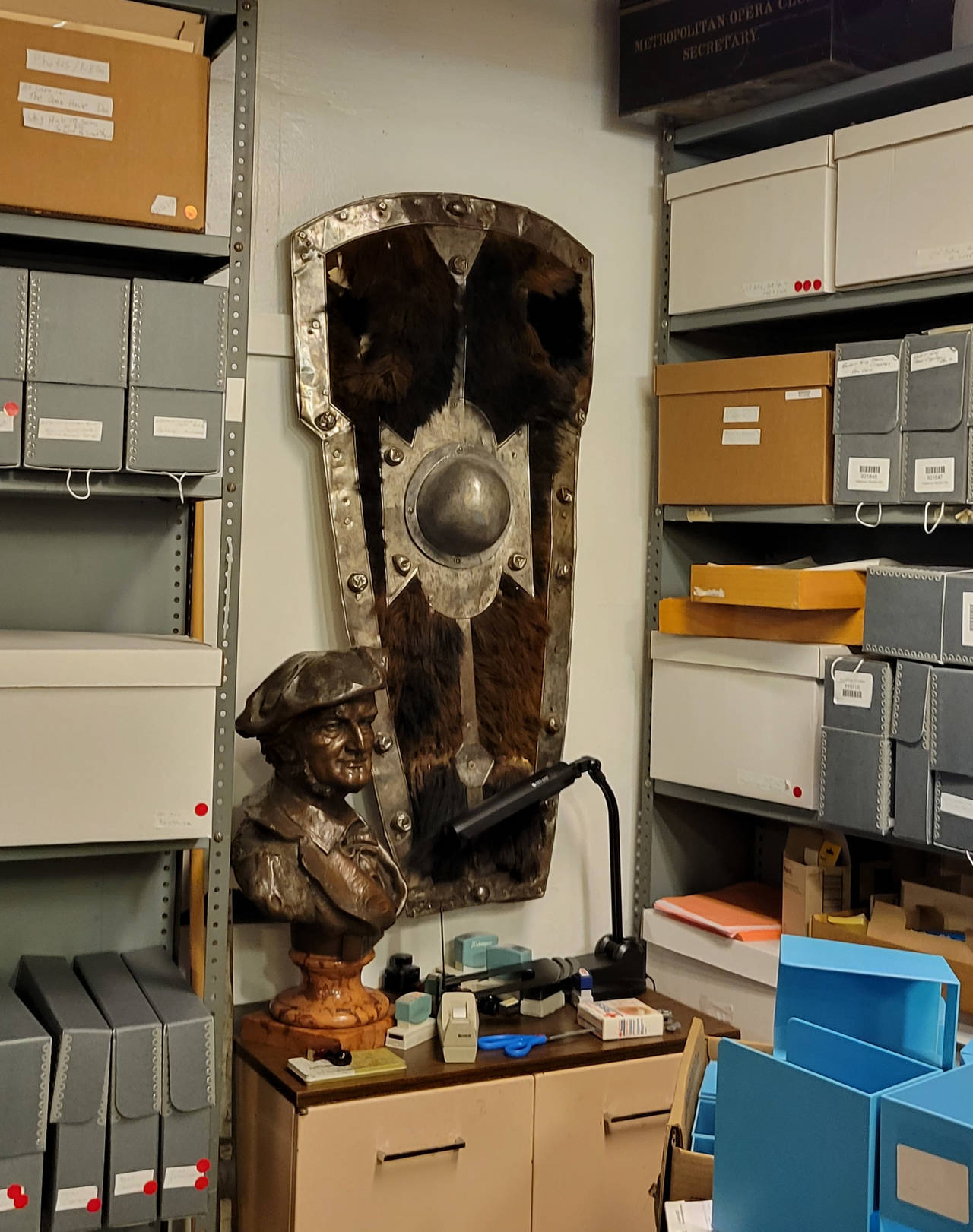
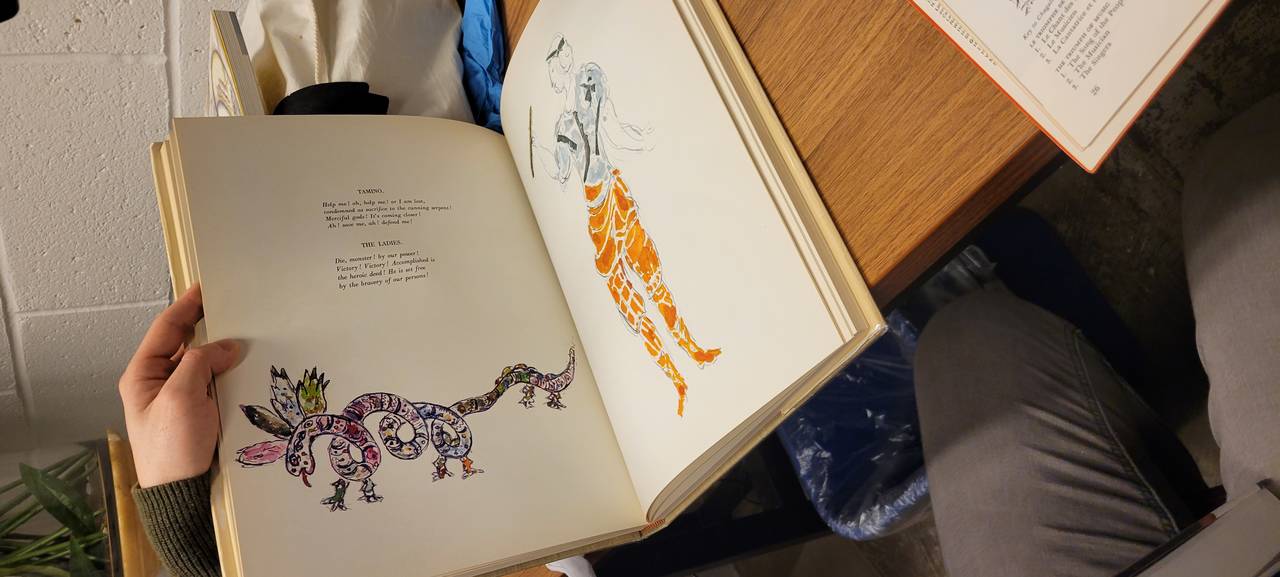
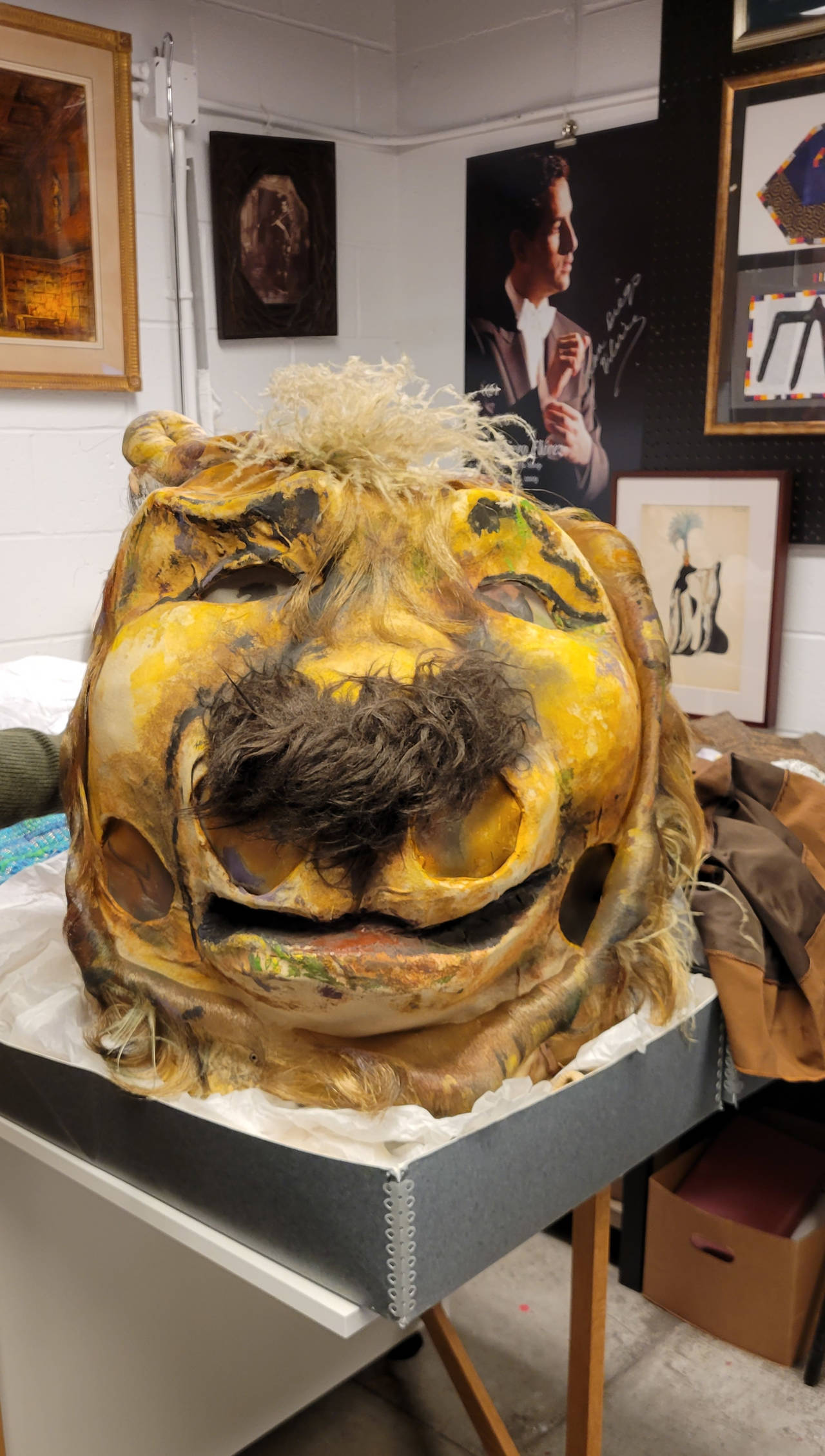
Jewish life on Riverside Drive
I’m a little heartbroken when I have to leave this wonderland of tchotchkes and trinkets, but all good things have to come to an end – and John has to go to the dentist. So, I make my way back through the maze of Metropolitan catacombs and step out into the light of day onto 64th Street.
There is one last stop on my list of Marc Chagall’s tracks in New York City: his and Ida’s apartment on Riverside Drive all the way over by the Hudson River. After Bella passed, Ida made it her mission to take care of her devastated father. They rented an apartment at 42 Riverside Drive overlooking the river. There Chagall spent weeks and weeks working through his wife’s work of prose, rearranging it to get it ready for publication. And there he also, after a hiatus of several month, started to work on his own works again. He cut up or adapted paintings, he had brought from France years ago, just to keep his connection to Bella as long as he could, but also gave them a darker touch as a symbol of his massive loss.
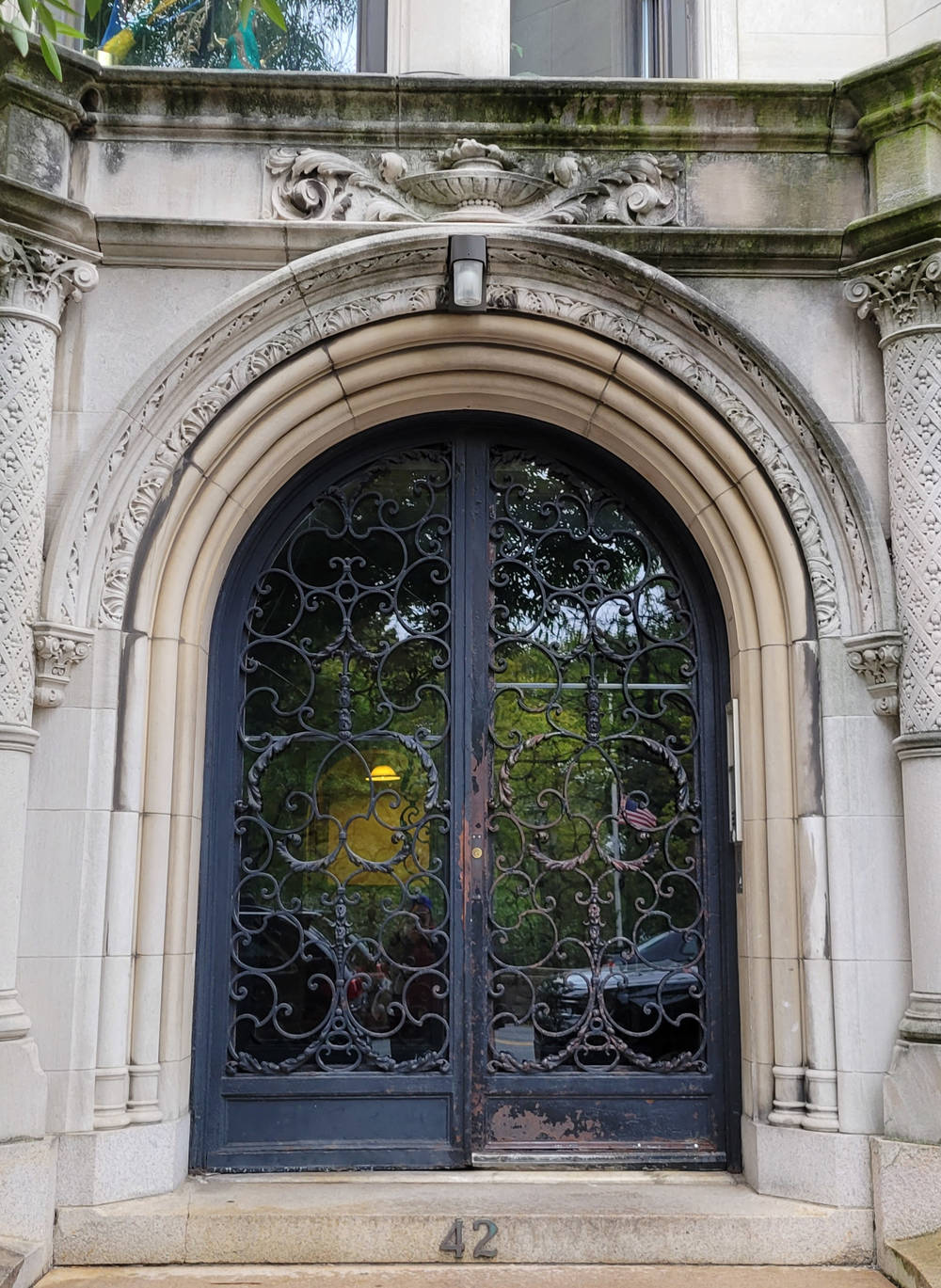
It has started to drizzle when I arrive at 42 Riverside Drive. The building is a classic, three-story limestone UWS gem with bay windows and a grand entrance. Four low rise steps lead to the cast iron gate, and one look on the list of tenants reveals a surprising amount of European sounding names. The Columbia campus is close by, as is Zabar’s, a Jewish specialty store famous for its bagels, lox, and schmear. Jewish life is very present in this area of the UWS, moving her father here was a smart choice. The sun is starting to set as I walk down Broadway. Up here it is still going up and downtown separated by a slim greenway that glows lovely in the blue hour of the day. The streetlamps jump to life and the sky is turning from blue to black as I turn into the Lincoln Center Plaza to see those Chagall murals illuminated in the dark. They glow like a big box of gemstones through the glass façade that is cut up like a Mondrian painting: “The Sources of Music” and “The Triumph of Music”.
Epilogue
Connecting… The three little dots are dancing on the lower left corner of my screen. When the image finally pops up, I can see a large room with lofty ceilings full of flowers, tools, and a row of lamps. There are two people in the far back discussing something. One of them starts to walk to the front and sits down. After missing each other in New York, Bella Meyer, Marc Chagall’s granddaughter has agreed to chat with me about her grandfather and his time in the city that never sleeps. Her gray hair is short and tousled, she is wearing a cognac-colored cardigan, and a very French looking scarf in the same color. She and her twin were born in Paris but grew up in Switzerland and it ultimately pulled her to New York, to explore the “myth of the city.”
“My grandfather did not like it when I moved to the US. But when I introduced him to my future husband, he was glad and said: Now you understand my paintings.” Bella worked various creative jobs, including costume design, and making and performing puppet shows, but finally ended up as a flower designer. She runs her own flower design company called fleursBELLA because she felt the need to tell stories with the abundant color scope and shapes, flowers have at their disposal, much like her grandfather used a brush and paint. “Yes, he is very present in my spirit. In my soul.” When I ask her about the time Chagall spent in New York, she shakes her head. “He never talked to us about that time. He did however create extraordinary paintings. He was politically very involved, but not like an activist, he fought through his paintings. His works show a deep necessity to express survival and the power of humanity to fight. The era shown at the SCHIRN is not dark to me, but powerful. A statement to resistance.”
The era shown at the SCHIRN is not dark to me, but powerful. A statement to resistance.









